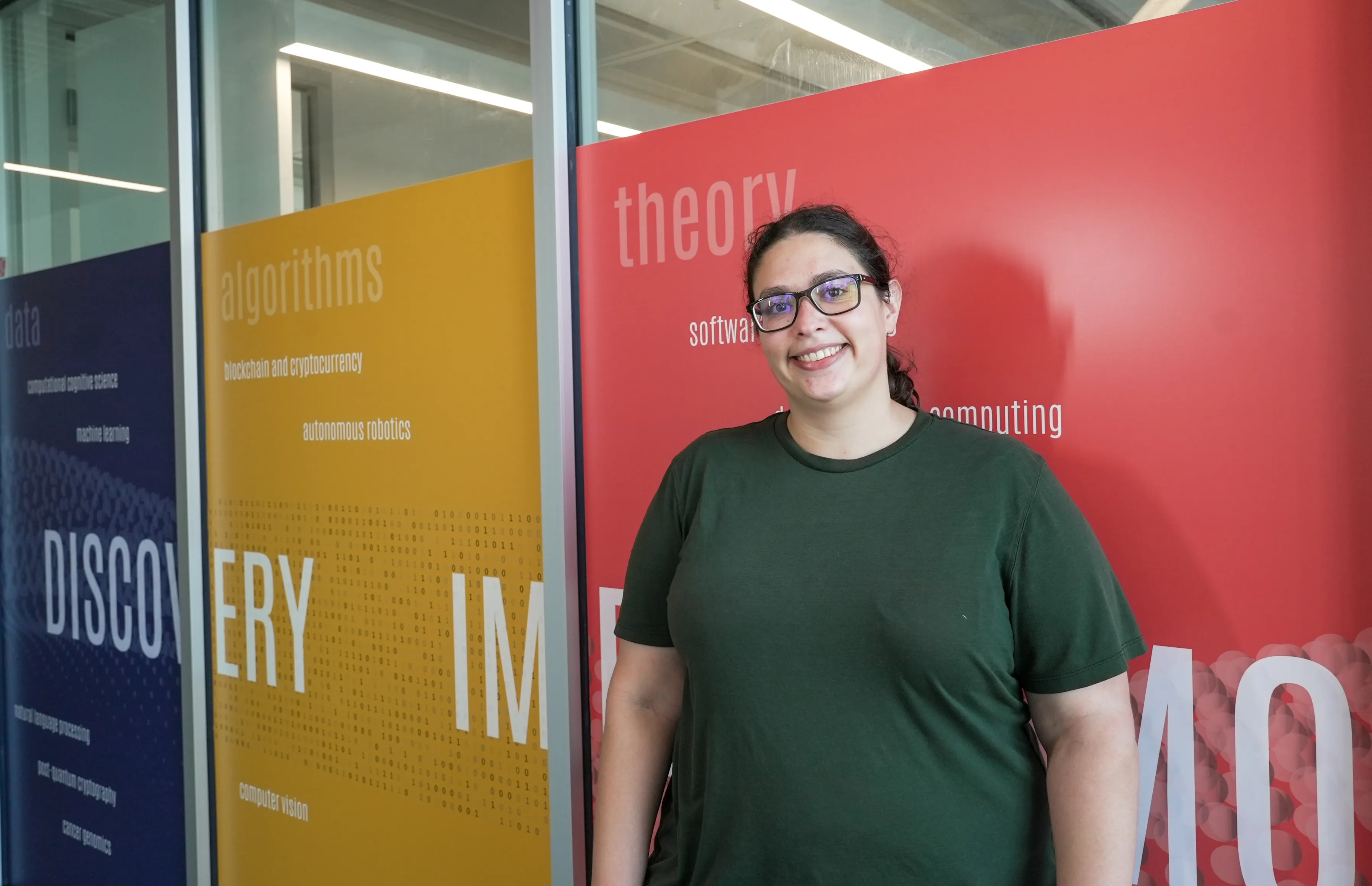
From political discourse to social media, the language people use can carry subtle cues about bias, identity and beliefs. Add in popular technologies like Grok and ChatGPT—which often craft detailed responses that are used verbatim—and there is a greater need to understand how new technologies can reinforce stereotypes or influence public opinion dramatically.
Julia Mendelsohn, who started at the University of Maryland this fall as an assistant professor in the College of Information and the Department of Government and Politics, is exploring these topics, and more—combining language, politics, and computer science to better understand implicit language in political discourse.
“There's a lot of very implicit ways in which people either express their own biases or their own political views, and how they can communicate,” says Mendelsohn, who has an appointment in the University of Maryland Institute for Advanced Computer Studies (UMIACS).
She describes her work—which applies natural language processing techniques to various areas in computational social science—as a “bridge” between the social sciences, focusing not only on understanding social phenomena, but also examining the social risks and implications of new language technologies.
This type of research is often known as sociolinguistics—which is the study of the relationship between language and society.
Originally from New York, Mendelsohn went to Stanford University for her undergraduate degree in linguistics and master’s degree in computer science, which is where she first became interested in the intersection between linguistics and computing.
She came across a project focused on racism and police interactions using natural language processing (NLP) techniques, which inspired her to learn more.
“The fact that you could show these differences by looking at the language with granularity with these quantitative methods, I thought was super cool,” she says.
From there, she received her Ph.D. at the University of Michigan in information and was a postdoc at the University of Chicago Data Science Institute.
At UMD, in addition to her teaching duties, she is active in the Computational Linguistics and Information Processing (CLIP) Lab, which is supported by UMIACS.
She says one of her main goals in CLIP is to explore sociolinguistic aspects related to the exponential use of large language models (LLMs).
“There's been increasing attention, especially as LLMs have really taken off, to the kinds of risks that they may have,” Mendelsohn explains. She notes risks such as malicious actors creating deceptive narratives and false evidence, a growing “erosion” of public trust in real information, and the weaponization of AI to dismiss genuine evidence by claiming it’s AI-generated.
Mendelsohn says that working in the CLIP Lab allows her to collaborate with language-focused colleagues that have more experience with the technical side of LLMs and machine learning algorithms, something she hopes to increase he own knowledge of.
She is also grateful for the new computational resources that will be available to her through UMIACS that will enhance her overall research agenda.
“The computing resources will just help make things happen,” she says, adding that additional support from UMIACS in the form of interdisciplinary collaborations, assistance with writing grants, and other administrative and technical support will also be beneficial to her work.
Mendelsohn says she has one incoming Ph.D. student and is actively recruiting others for her lab, looking for students who are ready to bring in fresh ideas and make meaningful contributions.
“I'm an interdisciplinary researcher, so I'm really looking for people with any kind of background,” she says. “The most important thing is a willingness and curiosity to learn and to have enthusiasm for the things that you're researching.”
Overall, with her support and mentorship, Mendelsohn hopes that her students will branch out and find new areas and topics to explore on their own.
“It's important for students to create their own ideas and see a project from the very beginning to the very end,” she says, “rather than just putting them on projects that I already have in mind.”
—Story by Zsana Hoskins, UMIACS communications team